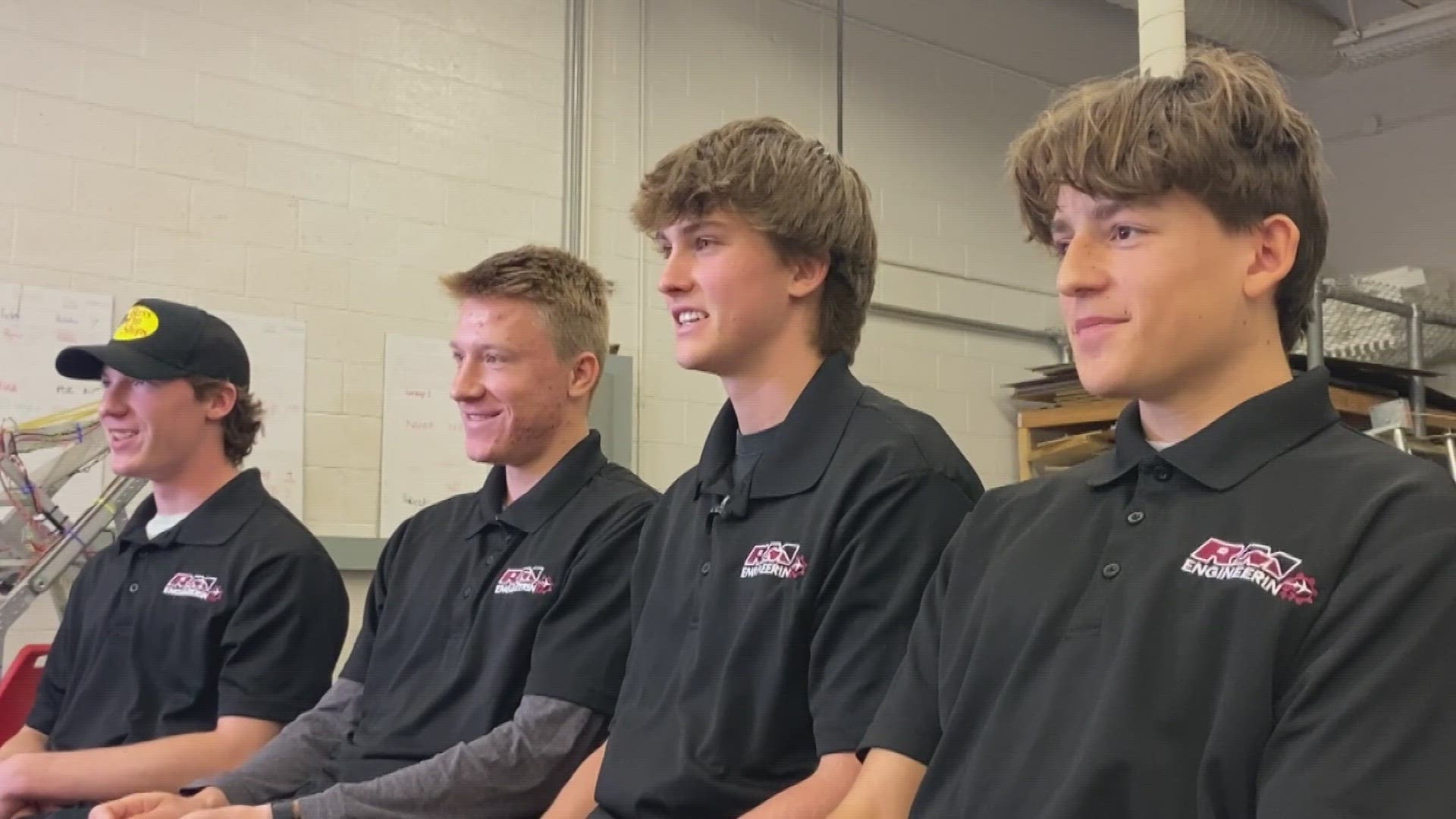MESA, Ariz. — A team of Red Mountain High School students is working this semester to get their experiment ready to launch on a rocket-powered lander.
The team of juniors and seniors at the Mesa high school was one of 60 teams that won the national NASA TechRise Student challenge.
The challenge asked student teams to submit experiment proposals to launch on either a high-altitude balloon or rocket-powered lander.
"The rocket lander definitely caught our attention because, I mean, who doesn't like rockets?," Red Mountain senior Kole Hayward said.
As part of the Red Mountain Engineering Program, which is part of STEM Pathways at Red Mountain High School, the students started the project in August and worked through October to submit their proposals. In total eight proposals were submitted from the 30-student class.
"They're doing really, really high-level engineering and science in this program, a huge amount of design work, huge amount of real applied science and engineering," Red Mountain High School engineering teacher Adam Middleton said. "And it's so gratifying for them to get recognized by an outside entity."
While the team that won the challenge is building their experiment to launch 80 feet into the atmosphere for two minutes, they're down to earth.
"There's a lot of smart people in our class," senior Tyler Mathews said. "So we were kind of expecting others to get it because they were coming up with really good ideas. And our idea, we thought it was kind of something that a lot of people would think of. But it was apparently kind of unique."
The team's idea was to fill a 4-inch by 4-inch by 8-inch box with equipment to use LIDAR to map the simulated lunar test field the experiment will launch over.
"They've been using it to map out the Amazon rainforest. Because of all the tree cover, it's really hard to find, like things that are there under the tree cover," Mathews said. "So I thought it was really cool technology and it would also be applicable to the moon surface."
But to make that happen, they're getting to work with mentors who work on these kinds of projects every day.
"It'd be cool like to do the actual engineering process with NASA people to learn how they do it at a super high professional level," junior Mason Celmer said.
The team will be meeting with the mentor for an hour a week to work on the project in advance of the summer launch.
"It is definitely an opportunity that I wasn't really expecting at first, but now that I'm here I'm definitely very excited," Caden Romero, a Red Mountain High School junior, said.
Not only will Hayward, Romero, Celmer and Mathews get to learn from the mentors, but Middleton said their entire class will also be learning from the mentors and supporting the team.
"There are 26 more students who are going to be behind them in support capacity, who are going to be learning the same skills, learning how to solder or learning how to program working with mentors, in the same way that our four winning finalists will be," Middleton said.
Red Mountain students have now won the challenge for the second year in a row. Last year, another four-student team launched their experiment on a high-altitude balloon.
"Our project was finding the correlation between radiation and pollution. So during the year that we were working on this project, we had a lot of wildfires going on with the dryness. So we were seeing if that had any correlation to pollution," senior Jonathan Coon, who was part of the winning team last year, said.
Coon said the team spent months working on the project.
"We got to work with some really cool people through NASA and Future Engineers, it also gave us the opportunity to learn new skills like soldering and coding," Coon said.
Up to Speed
Catch up on the latest news and stories on the 12News YouTube channel. Subscribe today.

